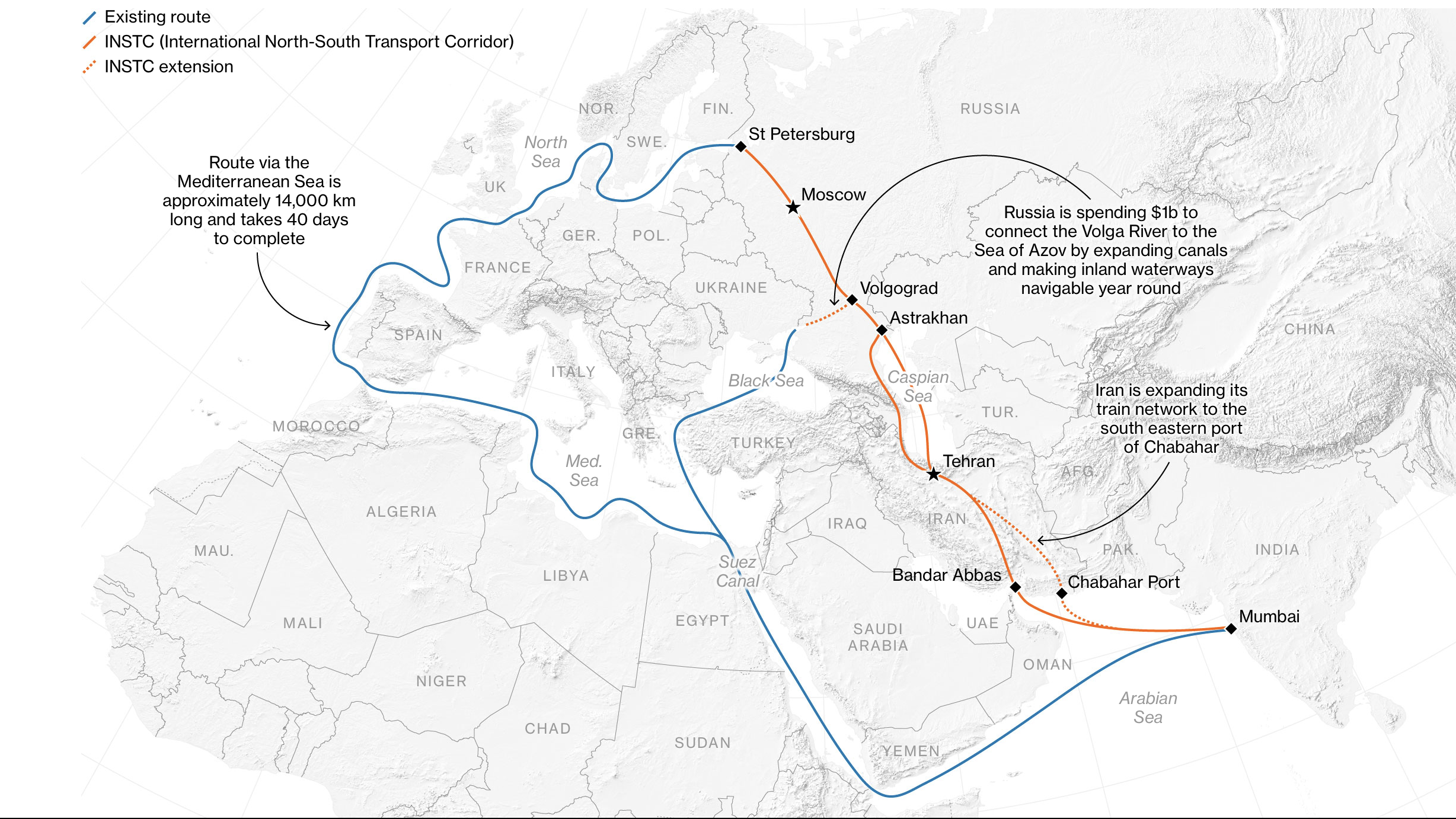Russian officials and international media have given prominent coverage to the country’s plans for a transcontinental trade corridor southward into Iran to end run Western sanctions and expand Russian trade with the Indian Ocean basin. However, Russian experts say that the opening of such a route is months or even years away, Eurasia specialist and former adviser to the US secretary of state, Paul Goble wrote in a new piece posted on his weblog.
The reason, experts like Georgy Vlastopulo, the head of the Optimal Logistics Company, say, lies in the topography of northern Iran. Large numbers of new tunnels and bridges need to be built because the existing rail network there has not been completed and is not yet fully electrified.
According to the expert, some 164 kilometers of tracks need to be laid through mountainous regions and electrical networks have to be expanded for more than 494 kilometers.
Moscow has promised to invest $1.2 billion on these projects, Vlastopulo says, but it is “an open question” as to when the work will be completed. In any case, it won’t be soon.
Sergey Khestanov, an advisor on macroeconomics at the Open Investments Company, says it is far from clear whether the value of trade that might pass along such a line would justify its completion.
“As a result, it is entirely possible that despite the current hype, no such line will be built anytime soon – or perhaps even at all,” he added.
Those who think otherwise, the two suggest, are ignoring both the topography of northern Iran and the probability that even if such a line were to open eventually, it might not pay off the cost of investments. In the coming months, that imbalance is only likely to increase.
A Trade Route That Defies Sanctions: Bloomberg
Russia and Iran are building a new transcontinental trade route stretching from the eastern edge of Europe to the Indian Ocean, a 3,000–kilometer (1,860–mile) passage that’s beyond the reach of any foreign intervention, Bloomberg reported recently.
The two countries are spending billions of dollars to speed up the delivery of cargos along rivers and railroads linked by the Caspian Sea. Ship–tracking data compiled by Bloomberg show dozens of Russian and Iranian vessels, including some that are subject to sanctions, already plying the route.
It’s an example of how great–power competition is rapidly reshaping trade networks in a world economy that looks set to fragment into rival blocs. Russia and Iran, under tremendous pressure from sanctions, are turning toward each other, and they’re both looking eastward, too. The goal is to shield commercial links from Western interference and build new ones with the giant and fast–growing economies of Asia.
New routes via Iran will shorten transportation distance by thousands of kilometers.
“This is about establishing sanctions–proof supply chains all the way through,” says Maria Shagina, an expert on sanctions and Russian foreign policy at the London–based International Institute for Strategic Studies.
The emerging trade corridor would allow Russia and Iran to shave thousands of kilometers off existing routes. At its northern end is the Sea of Azov, which is bracketed by the Crimean Peninsula, Ukraine’s southeastern coast, including the Russian–occupied port of Mariupol, and the mouth of the River Don.
Russian Optimism
Earlier this month, listing his country’s gains from the war in Ukraine, President Vladimir Putin said the Sea of Azov “has become an inland sea” for Russia.
From there, river, sea and rail networks extend to Iranian hubs on the Caspian Sea and ultimately the Indian Ocean. Putin has flagged the importance of that end of the corridor, as well.
At an economic forum in September, he underlined the need to develop the ship, rail and road infrastructure along the route that “will provide Russian companies with new opportunities to enter the markets of Iran, India, the Middle East and Africa, and will facilitate supplies from these countries in return.”
Shagina estimates Russia and Iran are investing as much as $25 billion in the inland trade corridor, helping to facilitate the flow of goods the West wants to stop.
There are compelling economic reasons for the new transit route.
Ships sailing the Don and Volga rivers have traditionally traded energy and agricultural commodities — Iran is the third-largest importer of Russian grain — but the range is set to widen.
The two countries have announced a raft of new business deals that cover goods, such as turbines, polymers, medical supplies and automotive parts.
Russia needs to compensate for the sudden breakdown of its commercial ties with Europe, which before the war was its biggest trade partner, as well as finding workarounds for US and European Union sanctions.
“With European transport networks getting closed off, they’re focused on developing alternative trade corridors which support Russia’s turn to the East,” says Nikolay Kozhanov, a Persian Gulf expert at Qatar University who served as a Kremlin diplomat in Tehran from 2006 to 2009.
“You can impose controls over sea routes, but land routes are difficult to watch. It’s almost impossible to track them all.”
There are plenty of obstacles, and both Russia and Iran are spending heavily to overcome them.


